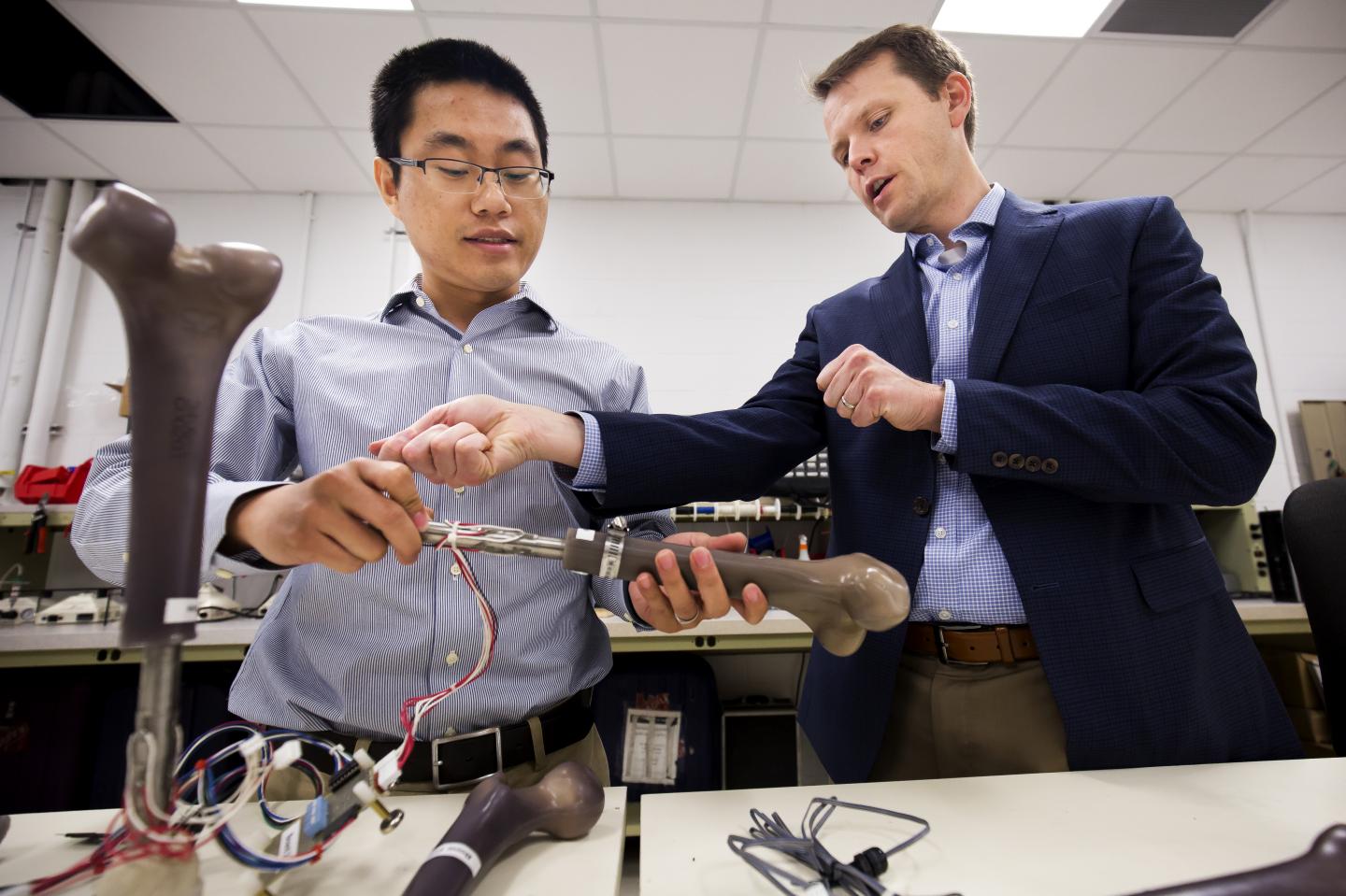
A Step Forward
The Office of Naval Research has announced plans to partner with the Walter Reed National Military Medical Center, the Naval Research Laboratory, and several universities to develop a new form of leg prostheses. As well as being more comfortable, these smart artificial limbs will help users avoid the risk of infection.
The Monitoring OsseoIntegrated Prosthesis (MOIP) project hinges upon a titanium fixture that is surgically implanted into the recipient’s femur. Bone generates around the point where it’s inserted, so only the small connection point juts out.

An artificial limb can be attached or detached from this connector at will. However, because of the way that metal protrudes from the limb, infections would not be uncommon. MOIP is being designed with this in mind, and offers means of keeping an eye on the situation.
A bio-compatible sensor array is embedded in the residual limb, which works in conjunction with sensors that are built into the prosthetic. It monitors body temperature and pH balance, both of which can offer early warning of an infection.
The sensor also tracks how well the bone is fusing with the fixture, and evaluates the effectiveness of the prosthetic based on the user’s gait. “One game-changing application of this technology would be as a tool to inform doctors when prostheses can be safely loaded after surgery, leading to more accurate determination of when patients are ready for physical therapy after receiving a new prosthetic,” said Dr. Jerome Lynch, a professor of engineering at the University of Michigan who is overseeing the sensor array’s development, in a press release.
March of Progress
Traditional leg prostheses usually attach to the wearer’s residual limb using a socket attachment. This socket puts pressure on the soft tissue of the leg, which can be uncomfortable, and can cause sores and blisters as well as infections. Many users need to have the socket manually adjusted by a professional on a regular basis.

The self-monitoring MOIP solves these problems, and should allow users to walk more naturally since there’s less discomfort.
The team working on the project has already completed a prototype version of its sensor array, which proved to be successful in laboratory testing. It’s expected that an improved iteration of the device will be ready for clinical trials in 2018.